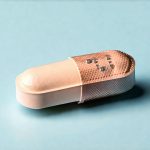Post-void dribbling (PVD) – that frustrating leakage after you think you’ve finished urinating – can be a surprisingly common issue impacting men particularly, though it can affect individuals assigned female at birth as well. It’s not simply an embarrassing inconvenience; it can significantly impact quality of life, leading to social anxiety, reduced self-esteem, and the need for constant vigilance regarding hygiene. Many people are hesitant to discuss this with healthcare professionals, often believing it’s a natural part of aging or fearing judgment. However, understanding the underlying causes and proactively implementing strategies to manage PVD can make a substantial difference in regaining control and confidence. It’s crucial to remember that seeking professional medical evaluation is paramount to rule out serious conditions and tailor management plans effectively.
This article explores practical daily urinary habits designed to help mitigate post-void dribbling. We will focus on lifestyle adjustments, behavioral techniques, and simple exercises that can empower you to take charge of your bladder health. It’s important to understand that these strategies are supportive in nature and should ideally complement advice from a doctor or pelvic floor therapist. Managing PVD often requires a multi-faceted approach, addressing both the physical aspects and the psychological impact of this condition. This isn’t about eliminating dribbling entirely overnight; it’s about minimizing its occurrence and reducing its impact on your daily life.
Understanding Your Urinary Habits & Making Adjustments
The first step in managing PVD is cultivating a heightened awareness of your existing urinary habits. Many people unknowingly contribute to the problem through ingrained behaviors. This begins with paying attention to when you urinate, how much you drink, and even what you’re drinking. Keeping a bladder diary for a few days can be incredibly insightful. Record the time of each urination, the amount (estimated is fine), what you drank beforehand, and whether any dribbling occurred. This provides valuable data to identify patterns and potential triggers. For example, do you notice more dribbling after consuming caffeine or alcohol? Does it happen more frequently when rushing through urination?
Beyond diary keeping, consider making conscious adjustments to your fluid intake. While staying hydrated is vital for overall health, excessive fluid consumption can exacerbate PVD. Aim for a consistent level of hydration throughout the day rather than gulping down large amounts at once. Space out your fluid intake and try to reduce consumption 2-3 hours before bedtime to minimize nighttime trips to the bathroom and potential dribbling. Also, be mindful of what you’re drinking. Diuretics like caffeine, alcohol, and carbonated beverages can increase urine production and potentially worsen symptoms. Consider substituting these with water, herbal teas (caffeine-free), or diluted fruit juices. For further guidance on staying properly hydrated, explore strategies for daily fluid balancing.
Finally, adopt a practice of “double voiding.” After finishing urination, wait 20-30 seconds and then attempt to urinate again. This helps ensure the bladder is completely emptied, reducing residual urine that can contribute to dribbling. It sounds counterintuitive, but it’s surprisingly effective for many people. Complete bladder emptying is a cornerstone of PVD management.
Strengthening Pelvic Floor Muscles
A weakened pelvic floor – the network of muscles supporting the bladder, bowel, and reproductive organs – is often a significant contributor to PVD. These muscles play a critical role in controlling urine flow and preventing leakage. Strengthening them through targeted exercises can dramatically improve urinary control. Kegel exercises are the most well-known method for this, but proper technique is essential. Incorrectly performed Kegels can be ineffective or even worsen the problem.
To perform Kegels correctly:
1. Identify your pelvic floor muscles. Imagine you’re trying to stop the flow of urine midstream (though don’t regularly practice stopping mid-flow as this can be detrimental). This is the sensation you should aim for.
2. Contract these muscles, holding for 3-5 seconds.
3. Relax completely for 3-5 seconds.
4. Repeat 10-15 times, several times a day.
It’s crucial to focus on isolating the pelvic floor muscles – avoid contracting your abdominal muscles, buttocks, or thighs during the exercise. Consistency is key; incorporate Kegels into your daily routine while sitting, standing, or lying down. Consider consulting with a pelvic floor therapist who can provide personalized guidance and ensure you’re performing the exercises correctly. They can also assess if other muscle imbalances are contributing to the problem. You might find it helpful to review daily hip release habits to further support pelvic health.
Addressing Urgency & Voiding Patterns
Many individuals experiencing PVD also struggle with urinary urgency – a sudden, compelling need to urinate. This often leads to rushing to the bathroom and incomplete bladder emptying, increasing the likelihood of dribbling. Managing urgency involves techniques aimed at calming the urge and promoting controlled voiding. Timed voiding is one effective strategy. Instead of responding immediately to every urge, schedule regular trips to the bathroom – for example, every 2-3 hours – even if you don’t feel a strong need to go. This helps retrain your bladder and reduce the sensation of urgency.
Another helpful technique is urge suppression. When you feel an urgent need to urinate, try these steps:
1. Stop what you’re doing and stand still.
2. Take slow, deep breaths.
3. Focus on relaxing your pelvic floor muscles.
4. Mentally distract yourself – count backward from 100, recite a poem, or visualize a calming scene.
The goal is to delay urination for as long as comfortably possible, gradually increasing the interval between urges. This process helps you regain control over your bladder and reduces the likelihood of rushing and incomplete emptying. Controlling urgency is often about retraining your brain and bladder. Learning more about easing urinary overactivity can be a beneficial part of this process.
Post-Voiding Techniques & Hygiene Practices
After urinating, it’s important to employ specific techniques to minimize dribbling. As mentioned earlier, double voiding is a simple yet effective method for ensuring complete bladder emptying. Following this, gently tap or lightly shake the penis (for men) after urination to help dislodge any remaining drops. This should be done cautiously and without excessive force. For individuals assigned female at birth, gently blotting with tissue can also help.
Beyond these techniques, maintaining good hygiene practices is essential for managing PVD. Regularly changing underwear, especially if damp, helps prevent skin irritation and odor. Consider using absorbent pads or liners if necessary to provide added protection and peace of mind. Prioritizing cleanliness and comfort contributes significantly to overall well-being. Remember that seeking professional medical advice remains crucial for accurate diagnosis and tailored management plans. PVD is a manageable condition with the right approach, and taking proactive steps can dramatically improve your quality of life. Understanding daily actions to reduce post-void dribbling is a great first step.
To support overall urinary health, consider incorporating beneficial foods for a healthy urinary tract into your diet and exploring protective daily habits.
Finally, remember that even small changes to your routine can have a big impact; explore simple movement habits for bladder health and integrate them into your daily life.





















